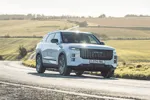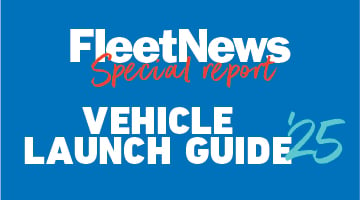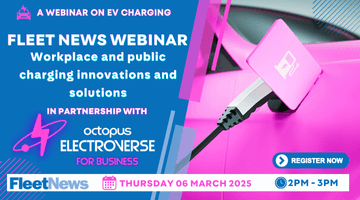Exclusive figures supplied to Fleet News show that since the newspaper's launch 25 years ago, new car sales to the corporate sector, including fleet and leasing, have jumped from about 36% of total new vehicle sales to more than 76%.
The research, supplied by consultancy firm Fleet Audits, claims that fleet and contract hire business has grown from more than 581,500 cars 25 years ago to 1.9 million units sold to the industry in 2001. The figures show that the first time business sales eclipsed retail was in 1986, when corporate sales totalled 946,370 units, compared to the 936,100 units sold to retail buyers. Sales to businesses and leasing companies first topped the one million milestone in 1987 – when 1,046,930 were sold to the corporate market.
Sales remained at more than one million units a year for the next four years but dipped to just over 937,000 in 1991.
In 1992 they increased slightly to 965,400 vehicles but again broke the one million-plus barrier in 1993.
Looking back to 1978, when Fleet News was launched, the top four car manufacturers in Britain were Ford, British Leyland, Vauxhall and Chrysler. It is estimated that pure company fleet sales in that year accounted for about 15 to 20% of new car registrations. A very small percentage of total sales – about 0.2% – were diesel.
As our tables show, the importance of fleet has grown steadily over the years and last year manufacturers broke a string of records as demand for the business car rose to an all-time high.
In 2002, fleet sales leapt 5.72% from the previous year to 1,090,398, while business car sales for vehicles provided to sub-25 vehicle fleets rose 10.3% to 234,417. Fleet and business sales combined accounted for 51.8% of the new car market. When all corporate business is included, Fleet Audits suggest that 76% of sales are actually paid for with business cheques.
Figures such as this demonstrate the massive growth of the fleet market over the past 25 years. When Fleet News started, very few fleets based their choice lists on wholelife running costs, with many paying little or no attention to residual values.
Today, the story is very different as discrepancies in a range of costs between competing cars can make or break a fleet sale. Ford's fleet director Mike Wear said the fleet industry was – and always had been – a great one to work within. He said: 'It's definitely the place to be. No one day is ever the same – you meet a lot of good people and have a lot of fun.'
For many years, Wear's counterpart at Vauxhall was Mike Bonner, who retired in 2001. For Fleet News' 20th anniversary, Bonner, then Vauxhall's fleet operations director, commented on 1978 by saying: 'Ford was dominant – everybody bought Cortinas. We got our break with the first rear-wheel drive Cavalier. Vauxhall came up with several different initiatives aimed at businesses. People took a look at the Cavalier, realised it was a good vehicle, and that was how we got a foot in the door.'
Top 10 cars 1978
Ford Cortina 139,204
Ford Escort 114,415
Morris Marina 82,638
Austin Morris Mini 72,617
Ford Fiesta 68,723
Austin Allegro 61,535
Vauxhall Cavalier 55,373
Vauxhall Chevette 52,327
Ford Granada 38,099
Datsun Sunny 37,923
Top 10 cars 2002
Ford Focus 151,209
Vauxhall Corsa 105,199
Vauxhall Astra 102,107
Peugeot 206 96,938
Ford Fiesta 93,591
Renault Clio 86,337
Volkswagen Golf 72,362
Ford Mondeo 72,016
Renault Megane 69,530
Ford Ka 62,863
Top 10 fleet cars 1993*
Vauxhall Cavalier 44,577
Ford Escort 37,912
Vauxhall Astra 34,086
Rover 200 30,577
Ford Fiesta 27,014
Ford Mondeo 19,346
Peugeot 405 18,529
Rover Metro 13,539
Ford Sierra 13,220
Rover 400 13,047
Top 10 fleet cars 2002
Ford Focus 101,399
Vauxhall Astra 75,190
Ford Mondeo 58,314
Vauxhall Corsa 53,303
Vauxhall Vectra 47,989
Renault Megane 40,654
Renault Clio 33,446
Volkswagen Golf 32,642
Ford Fiesta 30,970
Peugeot 206 30,000
How's this for a mouth-watering choice?
IMAGINE a user-chooser choice list that offered the Fiesta, Granada, Escort and Cortina from Ford, a Vauxhall Chevette and Cavalier, Morris Marina, Mini, Austin Allegro and Chrysler Avenger.
These are the sort of cars fleet drivers could opt for in 1978 – with the Cortina enjoying the biggest slice of the fleet pie. A 1600 GL model cost £3,423.
Ford and Vauxhall continue to dominate the top 10 sales charts for both retail and fleet, as they did 25 years ago, but since the launch of Fleet News many typical company cars have come and gone.
Who remembers gazing lovingly out of their office window at a Citroen ZX, Ford Sierra or Vauxhall Cavalier?
If, in 1979, you were among the first drivers of the newly- launched Vauxhall Astra, powered by a 1.3-litre engine using a four-speed gearbox, you could expect the trim level of the L model to include reclining seats, fitted carpets, head restraints and a rear wash/wipe.
The GL model of the car gained a push button radio, quartz clock, cigar lighter and a locking fuel cap. Your choice of options would have included a sunroof and tinted glass. Study the tables above and you'll see that the only car to consistently feature among the top 10 models for 25 years is the Ford Fiesta. This car was originally launched in 1976 and underwent its first major face-lift in 1984.
An important milestone of the Ford versus Vauxhall fleet sales battle of the 1980s came in May 1982, when Cavalier sales overtook the Ford Cortina for the first time. It clocked up 9,666 sales against the Cortina's 7,167, signalling an end at the time of Ford's unchallenged leadership of the medium car sector.
But Ford is still a dominant force, holding the fleet sales number one spot with the Mondeo and, from 1999, the Focus, according to figures produced by the Society of Motor Manufacturers and Traders.
The ever-increasing cost of fleet fuels
THE price of petrol has more than quadrupled over the past 25 years with hikes mainly down to fuel taxes rather than the greed of the oil companies.
Back in 1978, the cost of a gallon of petrol was a mere 87.5p, which when compared with an average of £3.59 for the same amount in 2002, is somewhat different.
However, we have yet to revisit the peak of June 2000. Little did we know when writing the February 2000 issue of Fleet News, with the headline, 'Fuel prices are set to break through the £4 a gallon barrier by 2003,' that petrol would soar to a staggering peak of £4.04 in June of the same year.
Who knows what the price will be in another 25 years? But one thing is for sure – it'll be more than £4 a gallon.
Average price per
gallon of petrol
1978 87.5p
1981 £1.59
1984 £1.78
1987 £1.65
1990 £2.06
1993 £2.47
1996 £2.79
1999 £3.51
2002 £3.59

















Login to comment
Comments
No comments have been made yet.